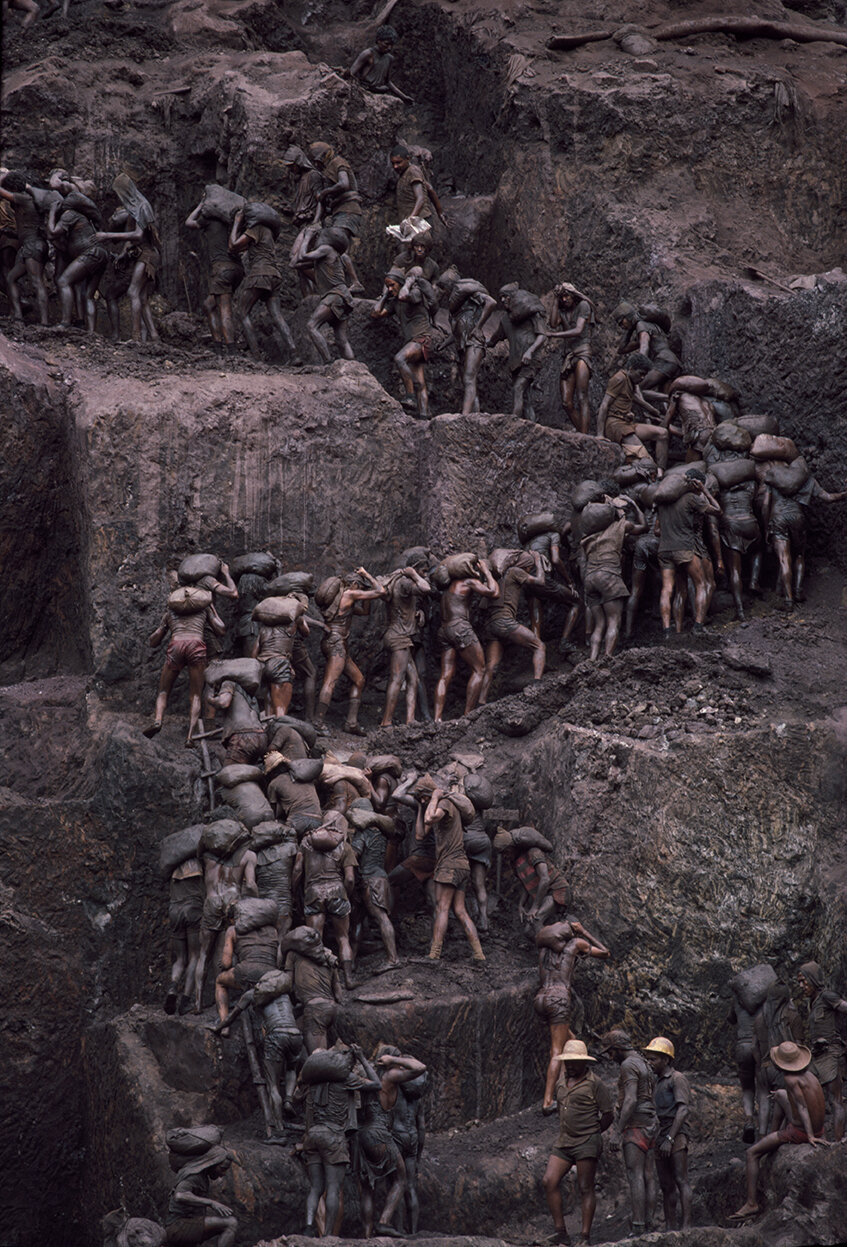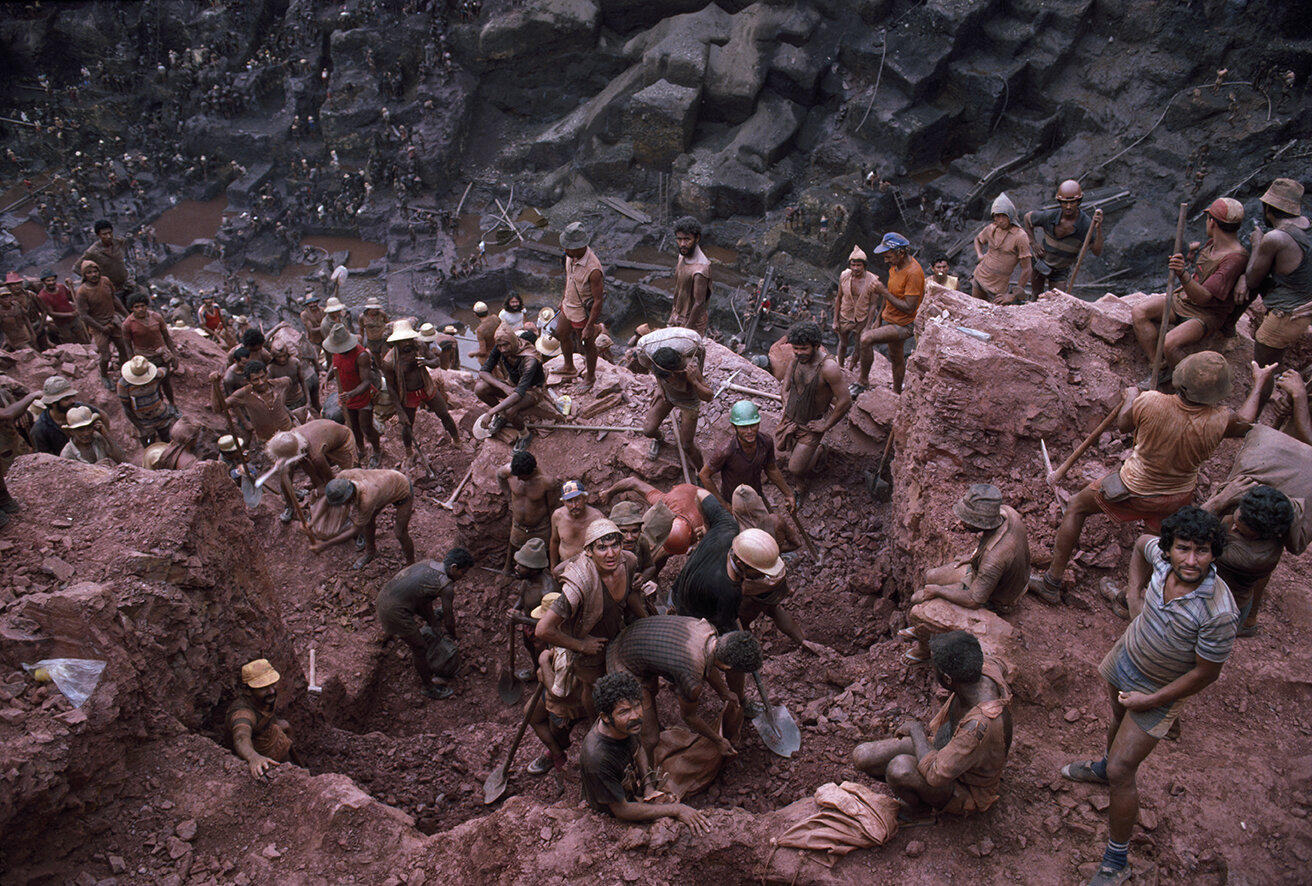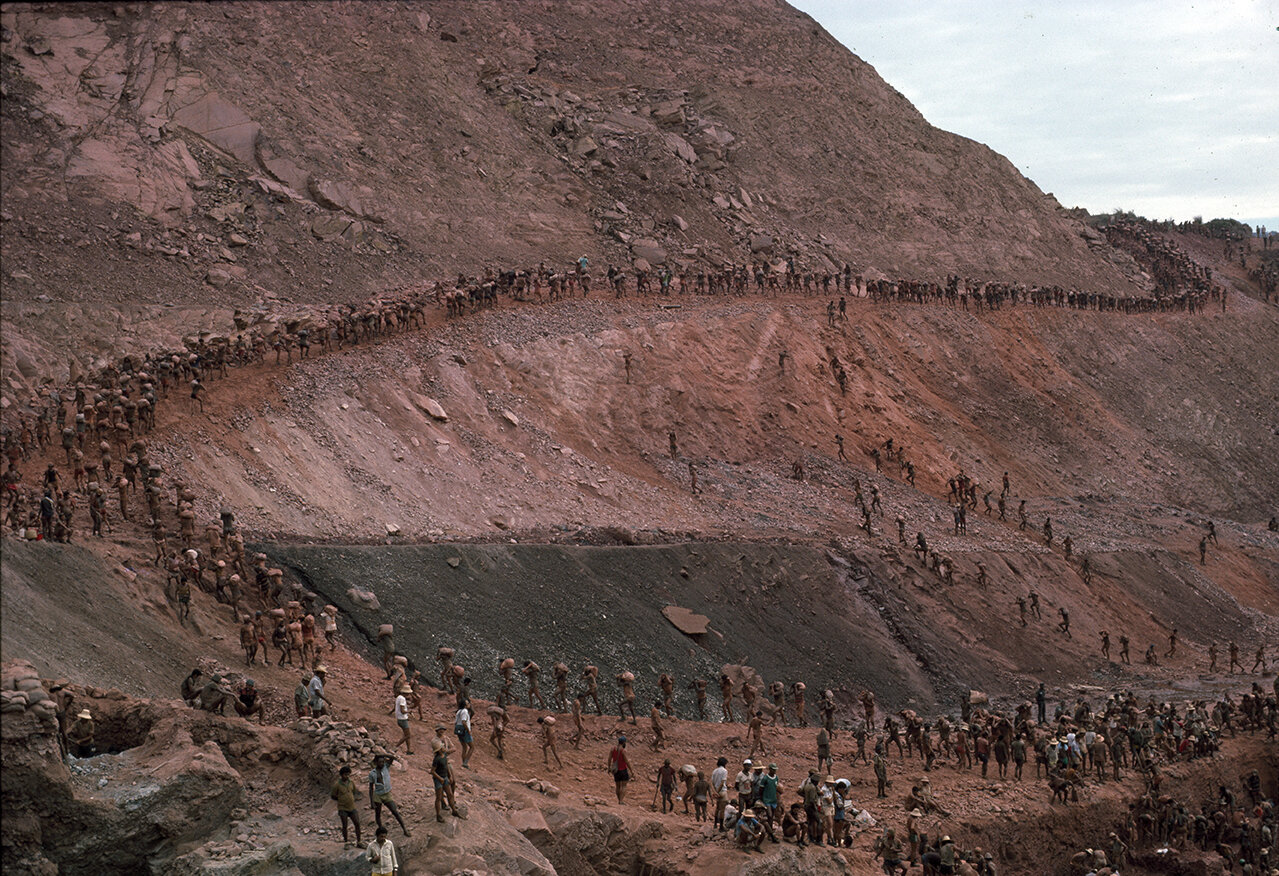Brazil: Serra Pelada’s Gold Rush
In 1979, gold was discovered at the base of Serra Pelada, or Bald Mountain, in the Pará state of Brazil, setting off a gold rush that would bring hundreds of thousands of garimpeiros, or miners, to the Amazonian region. I documented the mine and its workers in July of 1985 when I was based in Rio de Janeiro.
At its peak in 1983, an estimated 100,000 people were working in what was the largest open-air mine in the world. In its 7 years of production, 45 tons of gold were officially identified, but it is estimated that as much as 90% of all the gold found at Serra Pelada was smuggled out and sold on the black market.
Serra Pelada officially closed in 1986 after a series of landslides and structural collapses proved it unsafe, and the mine itself was flooded to prevent further exploration. Today, Serra Pelada is a 140 meter-deep lake completely polluted with mercury.
A few garimpeiros remain in the region and continue to prospect by hand any remaining gold they can salvage. Geological surveys have shown there could still be 20-50 tons of gold beneath the lake at Serra Pelada. To this day, tensions persist between the garimpeiros, the Brazilian government, and multinational mineral companies over control of Serra Pelada.














